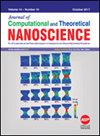Environmental Factor-Based Segmentation of Images in Natural Environments
Q3 Chemistry
Journal of Computational and Theoretical Nanoscience
Pub Date : 2021-05-01
DOI:10.1166/jctn.2021.9583
引用次数: 0
Abstract
The robust segmentation of color images in a natural environment without specific constraints such as lighting or background is very important in the field of image processing and computer vision. In this paper, an environmentally adaptive image segmentation method using color invariant is proposed. The proposed method introduces a number of color invariant, such as W, C, U, N, and H, and automatically detects factors in the surrounding environment in which images such as lighting, shading, and highlights are taken. The image is then effectively split based on the edge by selecting the color invariant optimal for the detected environmental factors. In the experiment, we implemented the proposed edge-based image segmentation algorithm. Various image data taken in general environments without specific constraints were utilized as input images of the suggested system. In this study, various kinds of color images taken in different environments were tested, and each color invariant was extracted from the experiments that best expressed the environmental changes around them. As a result, a largest number of images were determined to have a change in the intensity of lighting, followed by highlights and shadows. In addition, there were a few images that determined that no special state environmental changes existed. As the results of the experiment show visually, the existing method did not correctly remove shadows and did not detect some areas of the circular shape. In addition, the existing method can also be found to be partially inaccurate in edge detection in many areas. On the other hand, the proposed method confirmed stable segmentation of images. The proposed color invariant-based image segmentation algorithm is expected to be useful in various pattern recognition areas such as face tracking, mobile object detection, gesture recognition, motion understanding, etc.基于环境因素的自然环境图像分割
在没有特定约束(如照明或背景)的自然环境中对彩色图像进行鲁棒分割在图像处理和计算机视觉领域非常重要。本文提出了一种基于颜色不变量的环境自适应图像分割方法。所提出的方法引入了许多颜色不变量,如W、C、U、N和H,并自动检测拍摄图像的周围环境中的因素,如照明、阴影和高光。然后,通过选择对于检测到的环境因素最优的颜色不变量,基于边缘有效地分割图像。在实验中,我们实现了所提出的基于边缘的图像分割算法。在没有特定约束的一般环境中拍摄的各种图像数据被用作所建议的系统的输入图像。在这项研究中,测试了在不同环境中拍摄的各种彩色图像,并从实验中提取了最能表达周围环境变化的每种颜色不变量。结果,确定了最大数量的图像具有照明强度的变化,其次是高光和阴影。此外,还有一些图像确定不存在特殊状态的环境变化。实验结果直观地表明,现有的方法没有正确地去除阴影,也没有检测到圆形的某些区域。此外,现有方法在许多领域的边缘检测中也存在部分不准确的问题。另一方面,所提出的方法证实了图像的稳定分割。所提出的基于颜色不变的图像分割算法有望应用于人脸跟踪、移动物体检测、手势识别、运动理解等多种模式识别领域。
本文章由计算机程序翻译,如有差异,请以英文原文为准。
求助全文
约1分钟内获得全文
求助全文
来源期刊

Journal of Computational and Theoretical Nanoscience
工程技术-材料科学:综合
自引率
0.00%
发文量
0
审稿时长
3.9 months
期刊介绍:
Information not localized
 求助内容:
求助内容: 应助结果提醒方式:
应助结果提醒方式:


